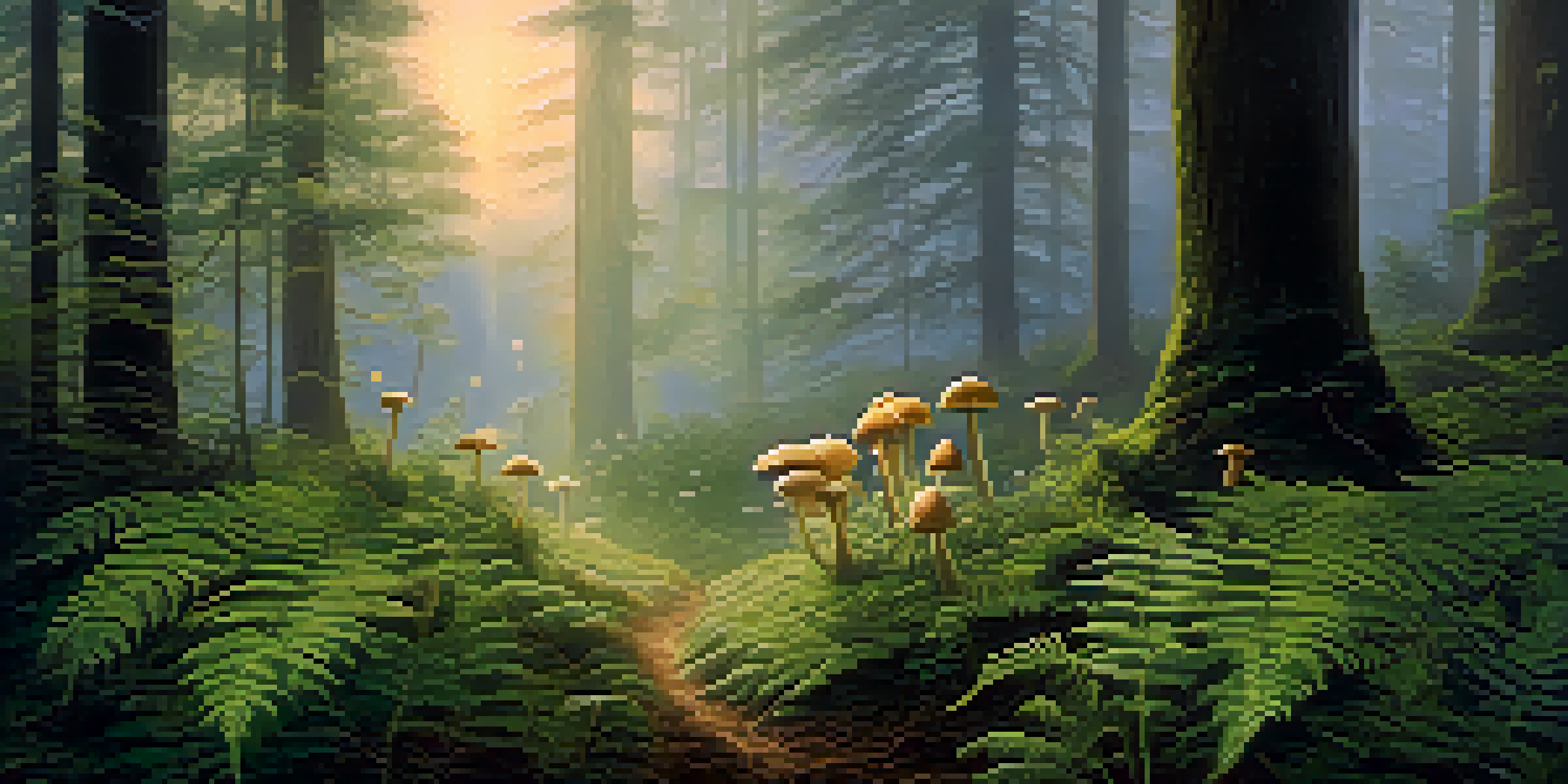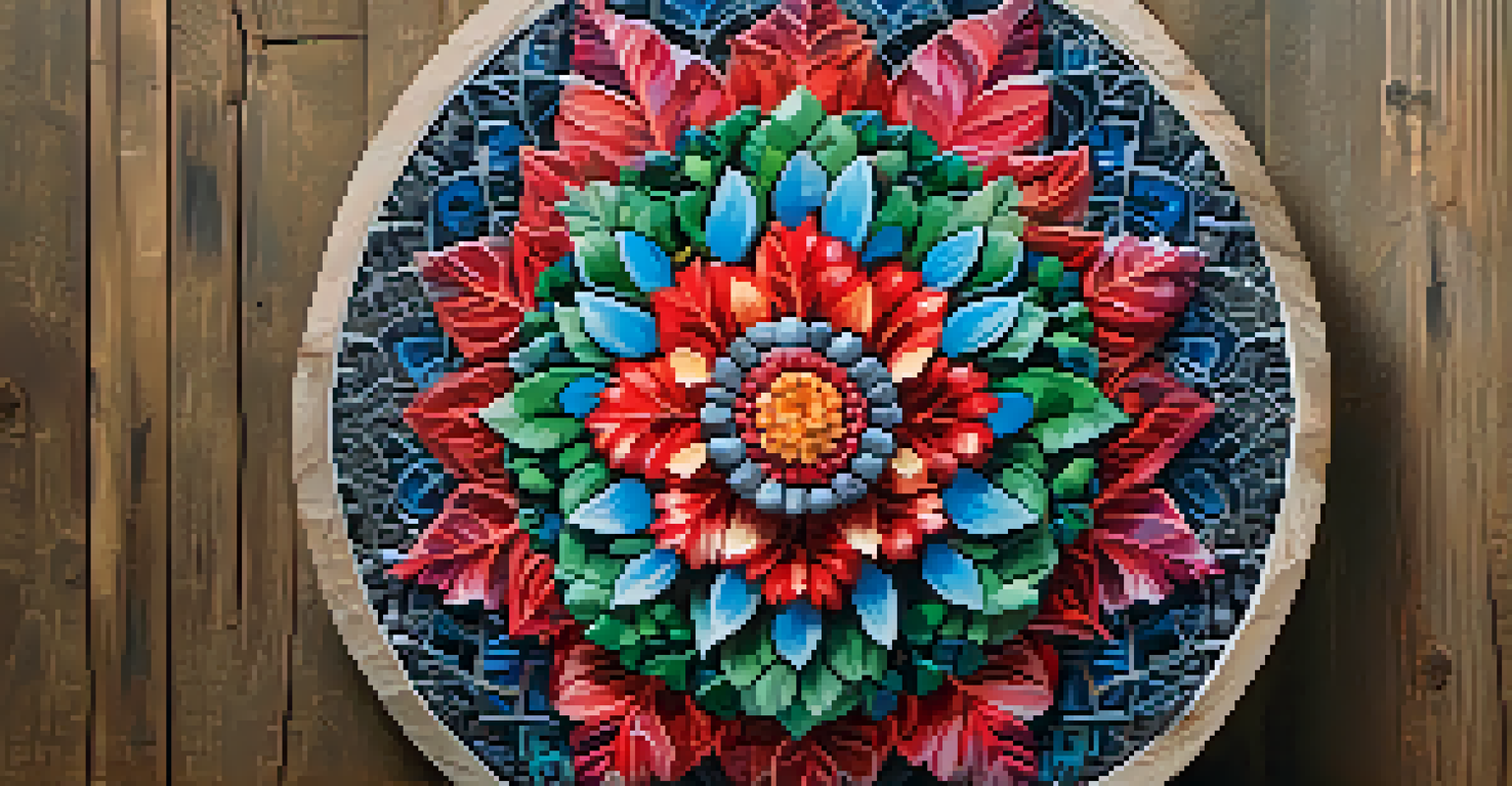Entheogens and the Construction of Personal Narratives

Understanding Entheogens: More Than Just Psychedelics
Entheogens are substances that people use to facilitate spiritual experiences, often leading to profound insights. These can include traditional plant-based substances like psilocybin mushrooms and ayahuasca, used for centuries in various cultures. While many associate them solely with recreational use, their purpose often extends to personal and communal exploration of consciousness.
Psychedelics can help us see ourselves and the world from a new perspective, allowing us to rewrite our personal narratives.
The impact of entheogens goes beyond just the chemical reactions in our brains; they can trigger deep emotional responses and memories that shape who we are. For instance, someone might recall a childhood event during an experience, leading them to reevaluate their past and how it has influenced their current self. This reevaluation can spark a journey towards healing and personal growth.
In essence, entheogens serve as tools for introspection, helping individuals navigate their inner landscapes. By engaging with these substances, many find clarity in their personal narratives, leading to a more authentic and enriched understanding of themselves.
The Role of Personal Narratives in Identity Formation
Personal narratives are the stories we tell ourselves about who we are, shaped by our experiences and the meanings we assign to them. These narratives play a crucial role in forming our identities, influencing how we interact with the world and perceive our place within it. They are not static; instead, they evolve as we accumulate experiences and insights over time.

When individuals engage with entheogens, they often confront their personal narratives, which can lead to significant shifts in perspective. For example, someone might discover that a limiting belief about themselves originated from a misunderstanding in their youth. By reframing this narrative, they can foster a healthier self-image and embrace new possibilities.
Entheogens Enhance Self-Discovery
Entheogens facilitate profound introspection, allowing individuals to reevaluate their personal narratives and foster personal growth.
Thus, the interplay between entheogens and personal narratives reveals a dynamic relationship where one can influence the other. As we re-examine our stories under the influence of these substances, we gain the opportunity to rewrite the scripts that dictate our lives.
Common Themes in Entheogenic Experiences and Narratives
Many individuals report similar themes when they journey with entheogens, such as connection, unity, and transcendence. These themes often emerge from feelings of interconnectedness with others and the universe, leading to a greater understanding of one's place in the larger tapestry of life. This profound connection can alter personal narratives, encouraging a sense of belonging and purpose.
The mind is not a vessel to be filled, but a fire to be kindled.
Another common theme is the confrontation of one's fears and traumas. Many find that entheogenic experiences allow them to face deeply buried emotions, leading to cathartic releases and newfound strength. For example, someone grappling with grief might find solace in understanding that their loved one’s essence continues to live on in memories and love.
These shared themes highlight the universality of the human experience, providing a rich tapestry of narratives that can inspire and connect individuals. By recognizing these commonalities, we can foster empathy and understanding among those who have embarked on similar journeys.
Cultural Context: Entheogens in Traditional Practices
Throughout history, various cultures have integrated entheogens into their spiritual and healing practices. For instance, Indigenous tribes in the Amazon have long used ayahuasca in ceremonial settings to connect with the spiritual realm and facilitate healing. These practices offer a framework for understanding personal narratives in a communal context, emphasizing shared experiences and collective healing.
This cultural backdrop enriches individual narratives by providing historical and spiritual significance to the experiences people undergo with entheogens. When individuals participate in these traditions, they often feel a deep connection not just to their own stories but to the stories of those who came before them. This sense of lineage can empower individuals to see themselves as part of a larger narrative.
Cultural Significance of Entheogens
The use of entheogens in traditional practices enriches individual narratives by connecting personal experiences to communal and historical contexts.
Thus, engaging with entheogens within their cultural contexts can enhance personal narratives, allowing individuals to draw from the wisdom and experiences of their ancestors. It emphasizes that our stories are not just ours; they are woven into the fabric of collective human experience.
Challenges and Ethical Considerations in Entheogenic Use
While entheogens can offer transformative experiences, it’s important to approach their use with caution and respect. Misuse or lack of preparation can lead to challenging experiences that may exacerbate existing mental health issues. Therefore, it’s crucial for those considering entheogenic journeys to seek guidance and ensure they are in a safe, supportive environment.
Ethical considerations also arise around cultural appropriation and the commodification of these sacred substances. As interest in entheogens grows, it’s essential to honor the traditions and practices of Indigenous cultures. This means recognizing the spiritual significance these substances hold and learning from those who have used them for generations.
By addressing these challenges and ethical concerns, we can engage with entheogens responsibly. This approach not only protects individual well-being but also fosters respect for the cultural practices that enrich our understanding of personal narratives.
Integration: Weaving Entheogenic Insights into Everyday Life
Integration refers to the process of incorporating insights gained during entheogenic experiences into daily life. This step is crucial for translating profound moments into actionable changes that can enhance one’s personal narrative. For many, journaling or discussing experiences with a trusted community can aid in this integration process.
The insights gained from entheogenic journeys can lead to shifts in behavior, perspective, and relationships. For example, someone who experienced a newfound sense of empathy during their journey might strive to communicate more openly with others, fostering deeper connections. These changes can significantly alter how they view themselves and their interactions with the world.
Integration is Key for Transformation
The process of integrating insights from entheogenic experiences into daily life is crucial for creating meaningful change and enhancing personal narratives.
Ultimately, the integration process serves as a bridge between the insights of the entheogenic experience and the realities of everyday life. By actively engaging in integration, individuals can create a more cohesive and meaningful personal narrative that reflects their growth and transformation.
The Future of Entheogens and Personal Narratives
As interest in the therapeutic potential of entheogens grows, so does the conversation around their role in shaping personal narratives. Researchers and therapists are increasingly exploring how these substances can aid in mental health treatment, offering new pathways for individuals to reframe their stories. This shift signifies a broader acceptance of entheogens as valuable tools for personal growth.
Moreover, as more people share their experiences, a rich tapestry of narratives emerges, contributing to the collective understanding of how entheogens impact identity. This exchange can foster a sense of community among those who have undergone similar journeys, creating support networks that encourage further exploration and integration.

Looking ahead, the future of entheogens in relation to personal narratives is promising. As we continue to navigate the complexities of human experience, these substances may help illuminate paths toward healing, understanding, and authentic self-expression.